Benefits of Doing Skullcrusher with a Barbell
Despite its brutish name, the skullcrusher is a safe and practical exercise you can use to inflate your triceps and make them stronger.
Unlike many triceps exercises, the skullcrusher is beneficial because it has a good overloading potential and primarily trains the triceps. You can keep adding weight to a barbell for a long time and progressively build up your triceps.
But doing so won’t come at the expense of training other muscles and taking the tension away from your triceps. The skullcrusher is also great because it places a significant stretch on your triceps, unlike many other exercises.
Doing skullcrushers is beneficial for overall arm development and physical abilities. The triceps cause elbow extension, making them valuable for various activities, including sports, pressing weights in the gym, and lifting objects above your head.
How to do a Barbell Skullcrusher

- Adjust a gym bench to a flat position and place an empty barbell at your feet.
- Grab the barbell with an even, overhand grip and have your hands shoulder-width apart.
- With the barbell in your hands, thrust it up and hold it in front of your chest, similar to how you would hold it for an overhead press.
- Carefully sit on the bench and lie back as you simultaneously extend your arms.
- Once lying back, you should have a firm grasp on the barbell and have it over your chest with your elbows extended.
- Plant your feet on the floor, pinch your shoulder blades together, and position the barbell directly over your forehead. Put your wrists, elbows, and shoulders in a straight line.
- Take a breath and lower the barbell behind your head. You should feel a stretch in your triceps.
- Hold the bottom position for a second and extend your arms, exhaling on the way up.
What muscles does the skullcrusher with a barbell activate?
The primary muscle that works during skullcrushers is the triceps. The muscle covers the rear of the upper arms and produces elbow extension (straightening of our arms) (1). Our triceps are most active from the bottom position, just as we begin to extend our arms, but they support the entire movement. Our shoulders are also involved in the exercise, primarily working to keep our arms in a stable position.
Aside from these muscles, our upper back and midsection musculature engage to maintain a rigid torso position. In addition, the rectus abdominis, transverse abdominis, obliques, lats, rhomboids, trapezius, and other muscles flex isometrically, which allows us to remain in a stable position and keep our shoulder blades back.
Tips when Performing Skullcrusher with a Barbell
Maintaining a steady elbow position is essential for safe and effective skullcrushers. Position the barbell over your forehead and keep your elbows in that position throughout the set. Doing so will make the movement more challenging, but it will help you activate your triceps better.
Training through a full range of motion is also crucial for effective skullcrushers. Lower the barbell as much as you comfortably can, then extend your arms and lock out your elbows. Using a full range of motion will allow you to engage your triceps better on every repetition.
You should also pick the correct load for productive skullcrushers. As a rule of thumb, you should be able to do at least eight good repetitions. If you fall short of that goal, lower the weight and try again.
Controlling the weight throughout each repetition is also essential for the exercise. Lower the barbell slowly; don’t let it drop behind your head. Similarly, extend your arms smoothly instead of jerking the weight back to the starting position. Being mindful of how you do each repetition will help you engage your triceps more effectively and reap better results.
Variations and Modifications of the Skullcrusher (barbell)
1. EZ Bar Skullcrusher
The EZ bar skullcrusher is the same as a barbell movement, the only difference being the equipment you’re using. EZ bars are smaller, lighter, and shaped in a way that allows for safer gripping. An EZ bar is a good alternative if straight bars cause elbow or wrist discomfort.
2. Dumbbell Skullcrusher
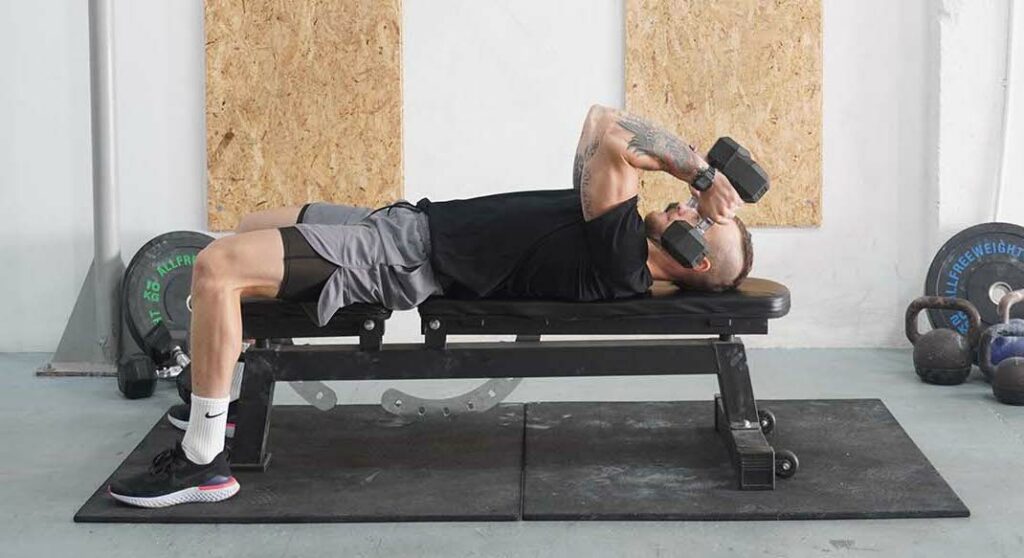
Dumbbell skullcrushers are an excellent alternative to the barbell version. Using dumbbells allows you to train both arms independently and prevent muscle imbalances from developing. In addition, dumbbells offer greater mobility, allowing you to train through a more extended range of motion.
3. Pause Skullcrusher
Adding a pause at the bottom of a skullcrusher is an effective way to challenge yourself with a lighter load. Doing pause training reinforces proper technique and forces you to pick a weight that’s not too heavy. Plus, holding the stretched position for one to three seconds causes a more significant stimulus in your muscles.
Mistakes to Avoid
The most common mistake related to skullcrushers is using too much weight, which shortens the range of motion. Sure, you’re using a barbell, which hints at the idea of lifting heavyweights. But we can’t forget that skullcrushers are an assistance exercise for the relatively small triceps muscle. So, use the appropriate load that allows you to do at least eight good repetitions on every set.
Another mistake with skullcrushers is not keeping a rigid torso throughout the movement. A relaxed upper body leads to unstable shoulders and arms, which prevents you from training safely. So, bring your shoulders back, dig them into the bench, and engage your abs before each set.
You also need to be mindful of your wrist position when doing skullcrushers. Some trainees allow their wrists to bend back, putting stress on the joint and leading to pain. Straighten your wrists before each set and keep them in that position until the end.
Similar Exercises to the Skullcrusher (barbell)
Triceps Kickbacks
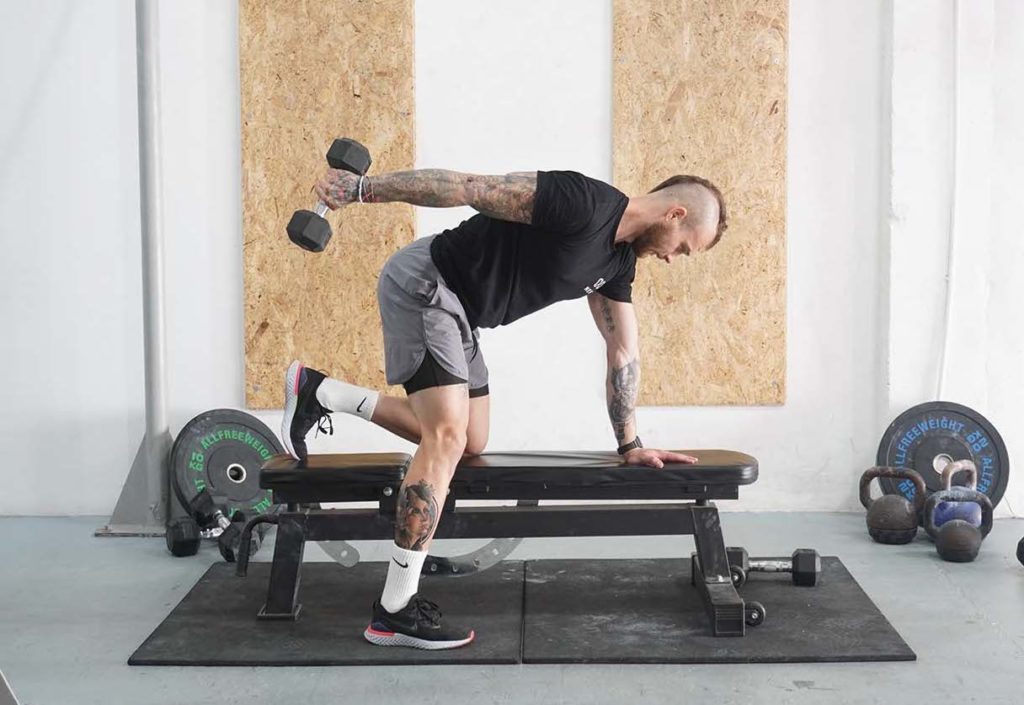
The triceps kickback is a simple and effective movement you can use to isolate and inflate the back of your upper arms (2). Typically, you would bend forward with a dumbbell in each hand, lift your elbows to torso level, and begin to lift the dumbbells back and toward the ceiling. You can also use a cable station for triceps kickbacks.
Triceps Rope Pushdown
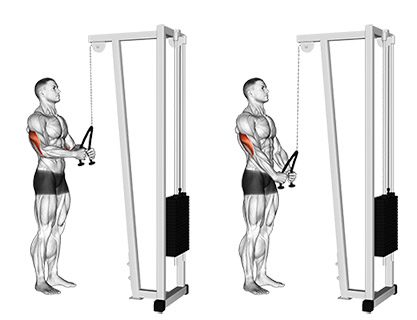
The rope pushdown is an excellent isolation movement for your triceps. Using a rope reinforces proper training form and helps you emphasize the lateral head of your triceps (2). The activity also offers a great range of motion, making it an excellent choice for your triceps routine.
Overhead Triceps Extension
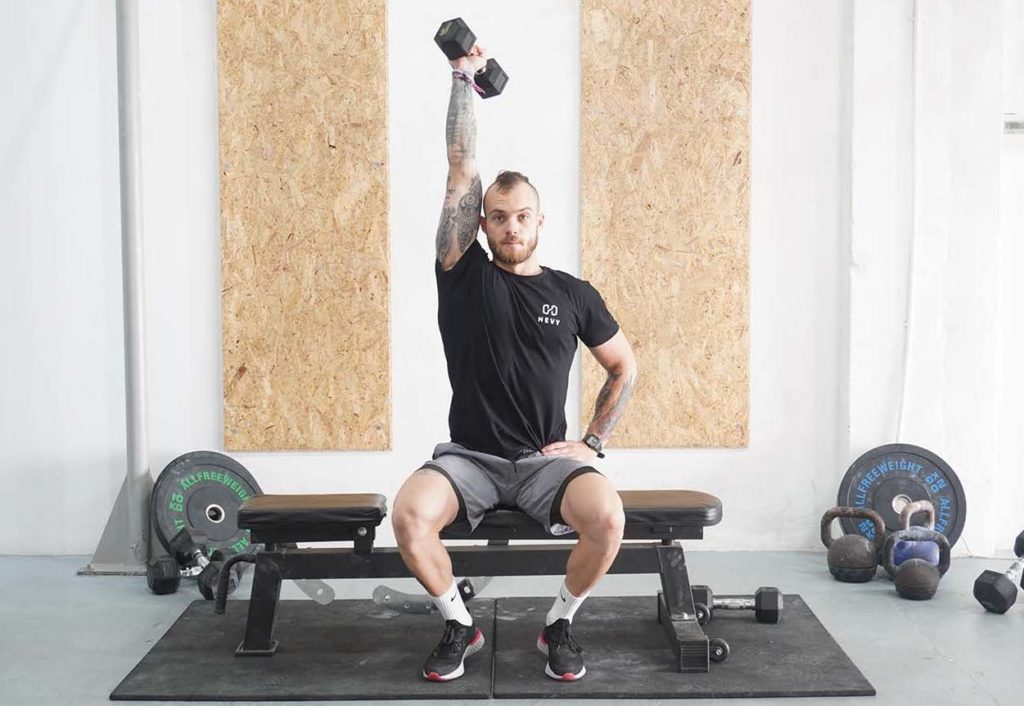
Overhead extensions are also great for isolating your triceps and improving shoulder stability. In addition, the movement is an excellent alternative to skullcrushers because it trains your triceps in a similar way, thanks to shoulder position.
Close-Grip Bench Press
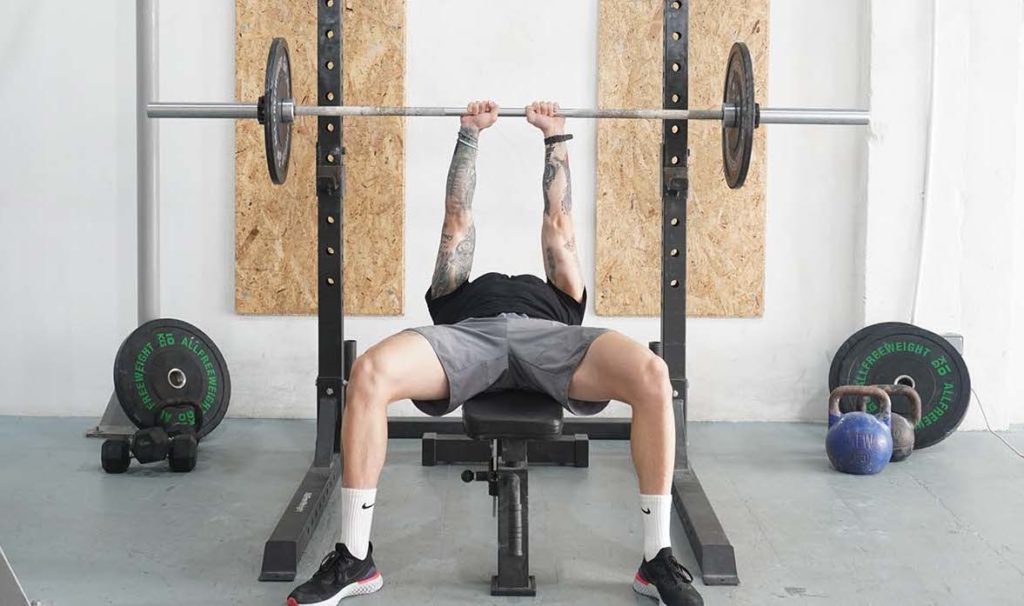
The close-grip bench press is an excellent compound movement that allows you to emphasize your triceps and overload them with more weight. Like skullcrushers, you can do the close-grip press with a barbell, which offers a good range of motion, and develops pressing strength.

